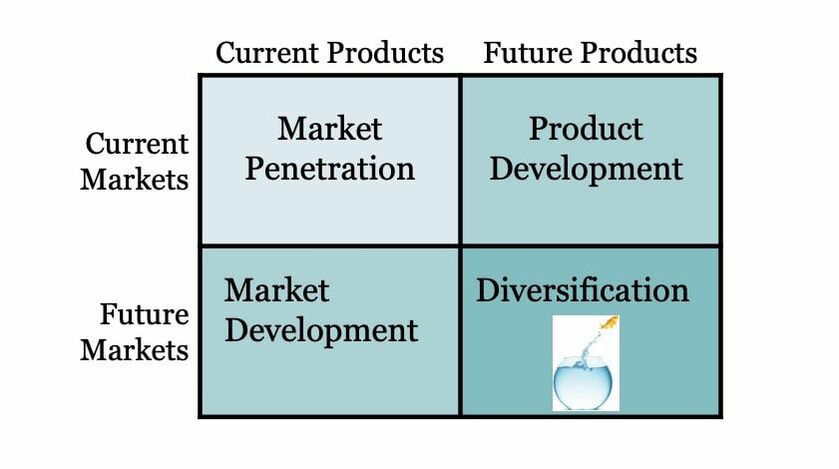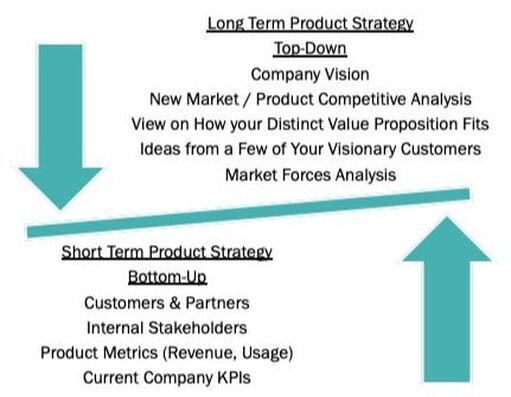SHORT TERM SAAS PRODUCT STRATEGY
You should definitely be listening to clients, partners, internal stakeholders, prospects, and product metrics when considering what to do next with your current products - your short term product strategy. As discussed in SaaS Product Metrics, the KPIs for these products could include win rate, customer adoption, customer NPS, short term revenue, and alignment with the your company's (short term) KPIs and metrics.
However your short term SaaS product strategy is often focused on market penetration; it is usually a bottom's up view of how to maximize the value of your current products in your current market (your current customers and customers like them). The Ansoff Matrix, one of the frameworks mentioned in Notes on Software Product Strategy, illustrates that there are other perspective you can consider for your SaaS product strategy.
You can consider what future products you can sell into your current markets by creating a (future) product development strategy. Also you can consider how to modify your current products to sell into future markets as part of your market development plans. (Both of these strategies are easier if you are a platform company; API-centric cloud platforms enable developers to more quickly build complementary products).
As part of this longer term product strategy you should consider
- Company vision and longer term company strategy
- Market forces (For example conside Porter's Five Forces framework which is discussed in Notes on Software Product Strategy: competitive rivalries, power of suppliers, power of customers, threat of new entrants, threat of substitute products).
- Competitors in these new markets and for these new products
- Ideas from a few of your best and most visionary customers about
- how your core capabilities can provide value in other parts of their business (future product development)
- how modified versions of your products can help these customers grow in other geographic / vertical markets.
And there will always be less capacity than you think.



 RSS Feed
RSS Feed